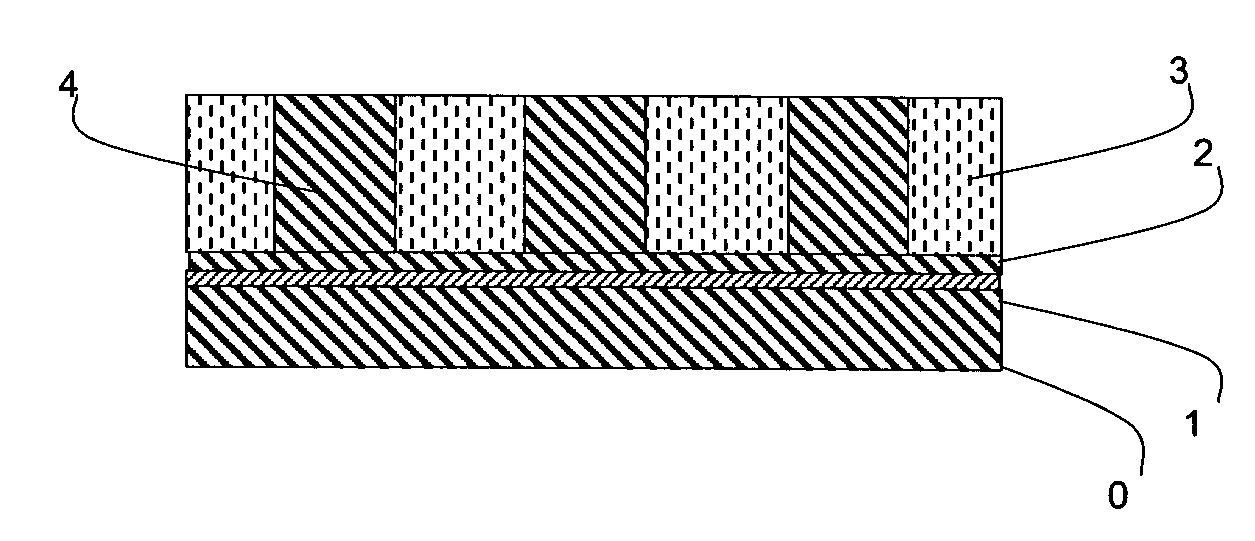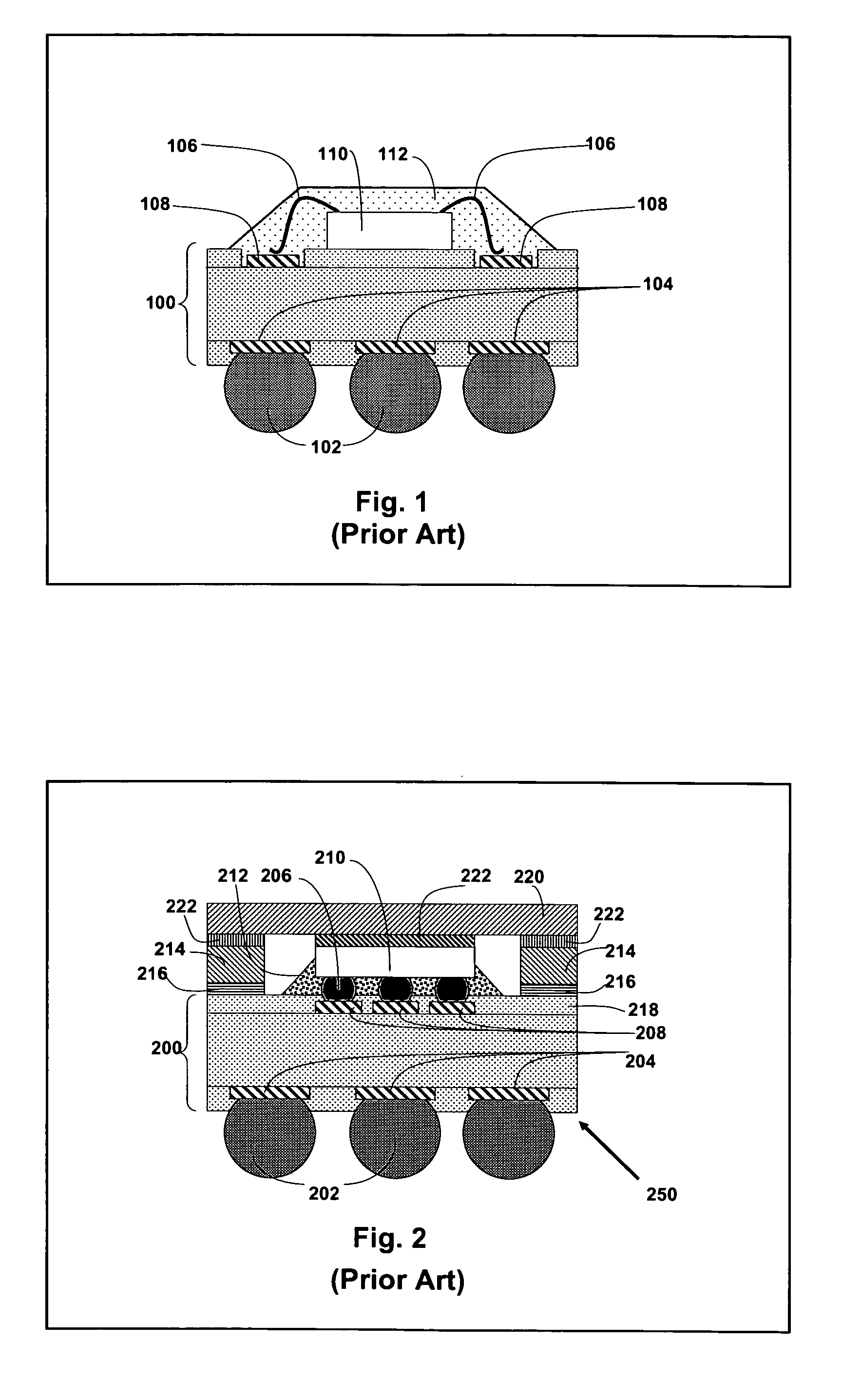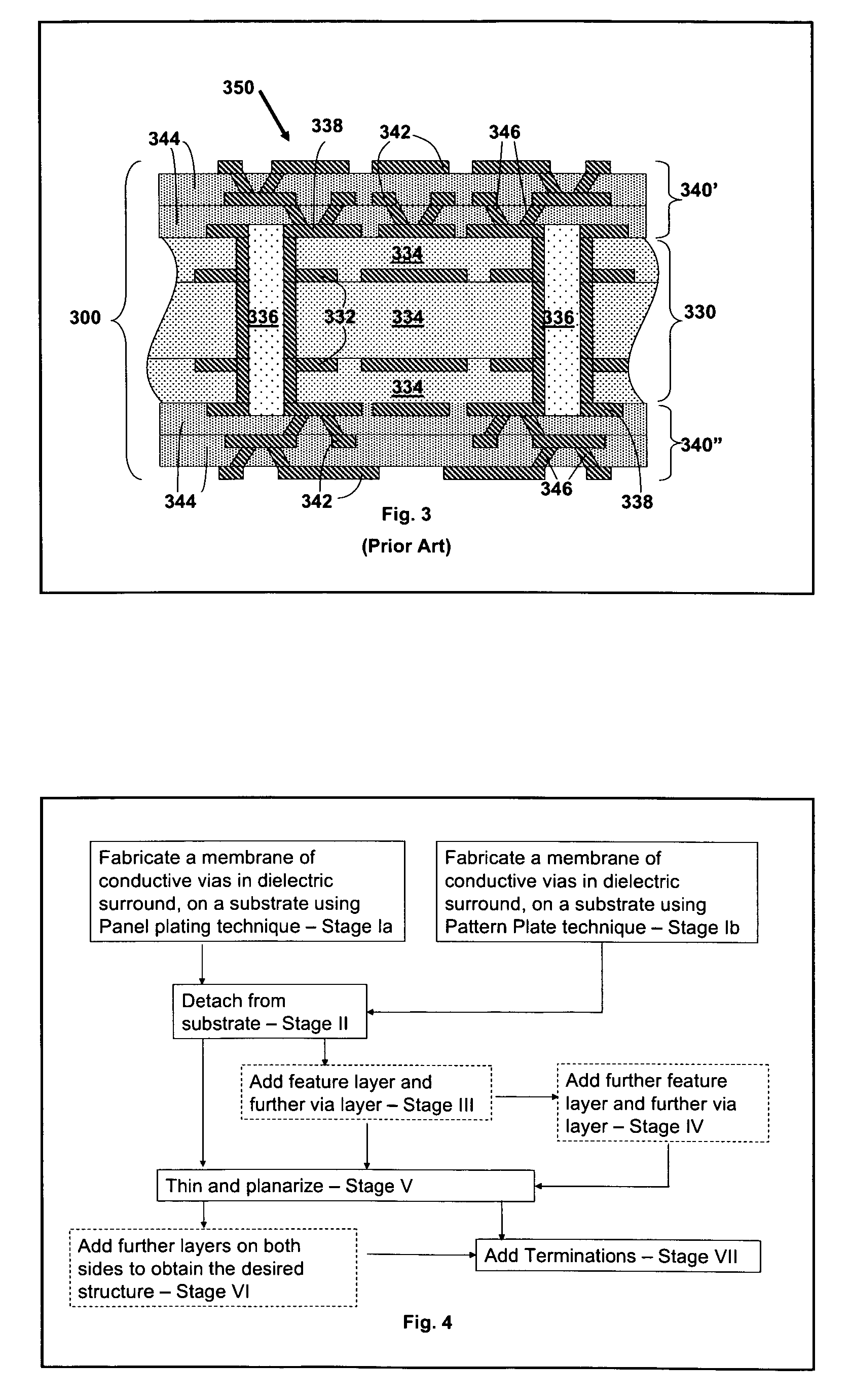As such, ICs are becoming more and more complex, and include ever larger numbers of transistors, and require increasing numbers of input / output contacts.
They are required to operate at ever increasing switching speeds and frequencies, have ever increasing power consumptions and consequently generate ever increasing amounts of heat that requires dissipation.
This is difficult to achieve if the built-up section of the substrate is only formed on one side of the core.
There is a cost to building up
layers on both sides of the core however.
It adds more manufacturing process steps, which, in turn, increases fabrication costs.
Since the resulting substrate structure is more complicated, manufacturing yields drop off.
Furthermore, the substrate thickness is increased, resulting in less compact, thicker packages that are less desirable for mobile communication and other applications where
miniaturization is required.
This deteriorates the over all performance of the IC.
Firstly, all the conductor
layers of the substrate require expensive thin film interconnects.
While conductor
layers in the form of thin film interconnects provide better performance due to their improved densities and finer pitches, they are inappropriate to the substrate's power and ground
metal planes which are usually low in density and
pitch, and building them using expensive thin film technology is cost prohibitive.
Furthermore, these layers usually require a certain
metal thickness to reduce electrical resistance and to prevent overheating.
This can become difficult to achieve when using thin
film processing techniques.
Furthermore, the
Flip Chip bonding process applies a pressure which thin film interconnect structures are ill equipped to withstand.
Such pressures tend to distort and / or stretch the interconnect structure, which in thin films are typically less than 100 microns thick.
This sometimes causes
cracking of the thin film
dielectric layers and may lead to operating failure of the IC.
Additionally, it will be appreciated that the presence of a
metal stiffener adjacent to the IC consumes valuable space on the external surface of the substrate and may limit usage in applications requiring passive components, such as decoupling capacitors, in close proximity to the IC.
Furthermore, the
large aperture metal stiffener used may make this technology unsuitable for applications requiring, for example, multi
chip substrates, low body-sized substrates, substrates supplied in two dimensional matrix arrays or in strip formats.
Such laminate structures have been found to be susceptible to warping, particularly in consequence of
hot pressing or curing processes.
Core-less substrates obtained thereby, typically lack the flatness required for securely and reliably mounting ICs thereupon.
Where such substrates have been built up on one side of a metal carrier base that is subsequently removed prior to IC
assembly, or thinned down to provide a stiffener supported substrate, internal unbalanced stresses invariably develop during fabrication.
These stresses may be released on removal of the metal carrier, causing substrate curvature and warping.
This can result in poor yields when assembling the IC thereupon, and may even lead to non flat packages that cannot then be mounted onto the corresponding PCB.
Nevertheless, the technology described in U.S. Pat. No. 6,913,814 to Ho et al. has two major drawbacks: Firstly, in order to construct a structure having a bottom layer with a low
pitch BGA thereupon for attachment to a PCB and a
high pitch upper IC side, the substrate must be constructed from individual laminae, each having different densities and different
dielectric layer thicknesses.
Once again this results in an unbalanced, asymmetrical, structure with an inherent tendency to curving.
Secondly, as is well known to those experienced in the art, connecting the substrate layers with via-to-pad contacts based upon metal contacts achieved through dielectric materials lamination is unreliable for high performance ICs applications, since these have a tendency towards loss of via contact and
resultant package failures.
This is especially of concern where high temperature processes are used during IC mounting onto the substrate.
However, because the stack is fabricated from the center outwards, with one half stack being fabricated first, from the center outwards, followed by the second half stack being fabricated on the first half stack, again from the center outwards, it is difficult to ensure that the
processing conditions remain the same for the two half stacks, especially for structures with large numbers of layers.
Discrepancies between the two sides typically results in some unbalanced residual stresses in the substrate that may lead to warping, resulting in the substrates that do not reach the strict planarity requirements of advanced IC
package constructions, such as
Package on
Package (PoP),
Package in Package (PiP), packages containing stacked ICs, and packages containing several ICs mounted by
flip chip processes and others by Wire Bond techniques.
For this and other reasons, the
processing method of co-pending IL 171378 to Hurwitz et al., though being a major step forward in the art, nevertheless has limited applicability for very complicated, multilayered structures having a large number of active layers, and attempts to fabricate such structures have, in the past, lead to reduced yields.
 Login to View More
Login to View More  Login to View More
Login to View More 


